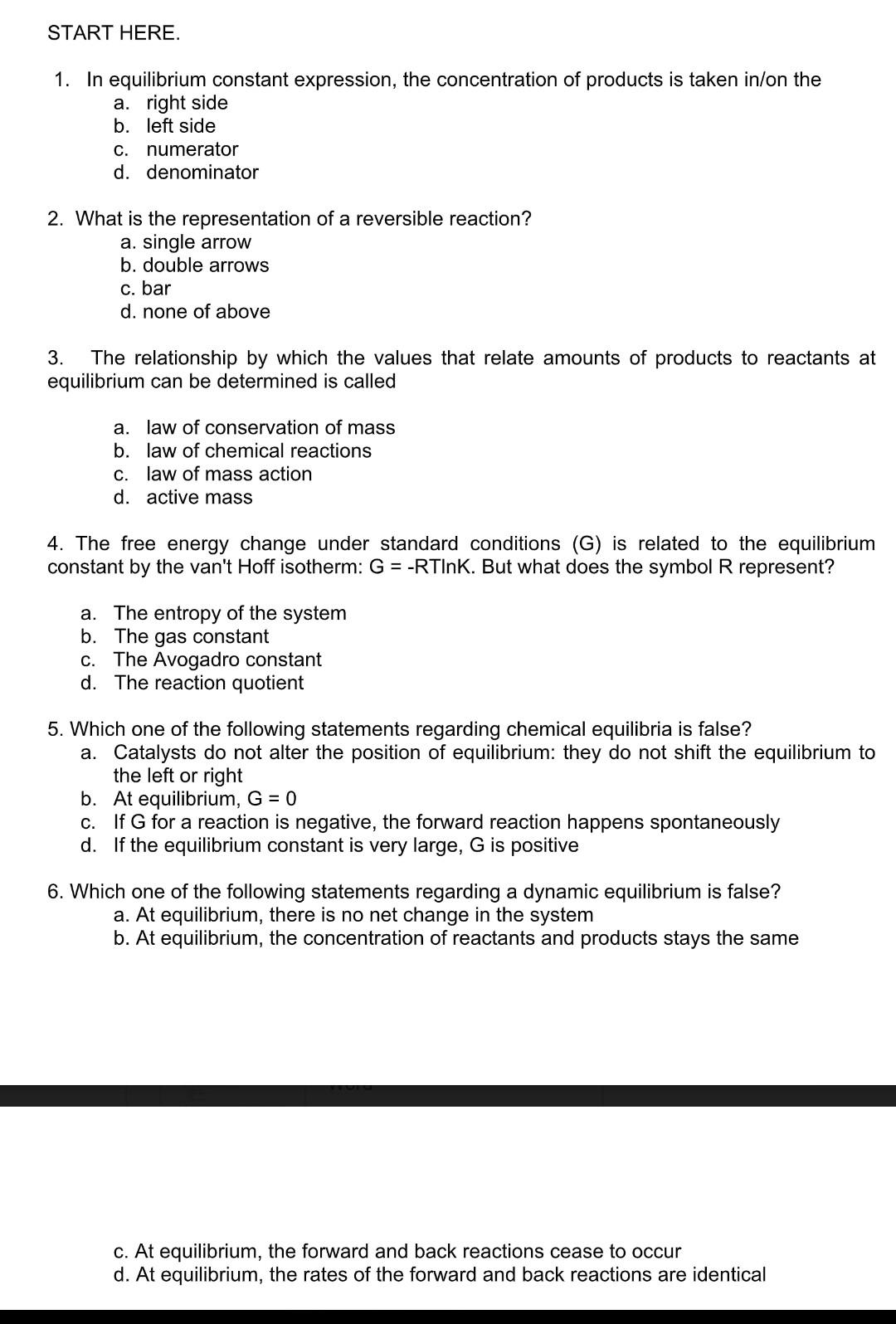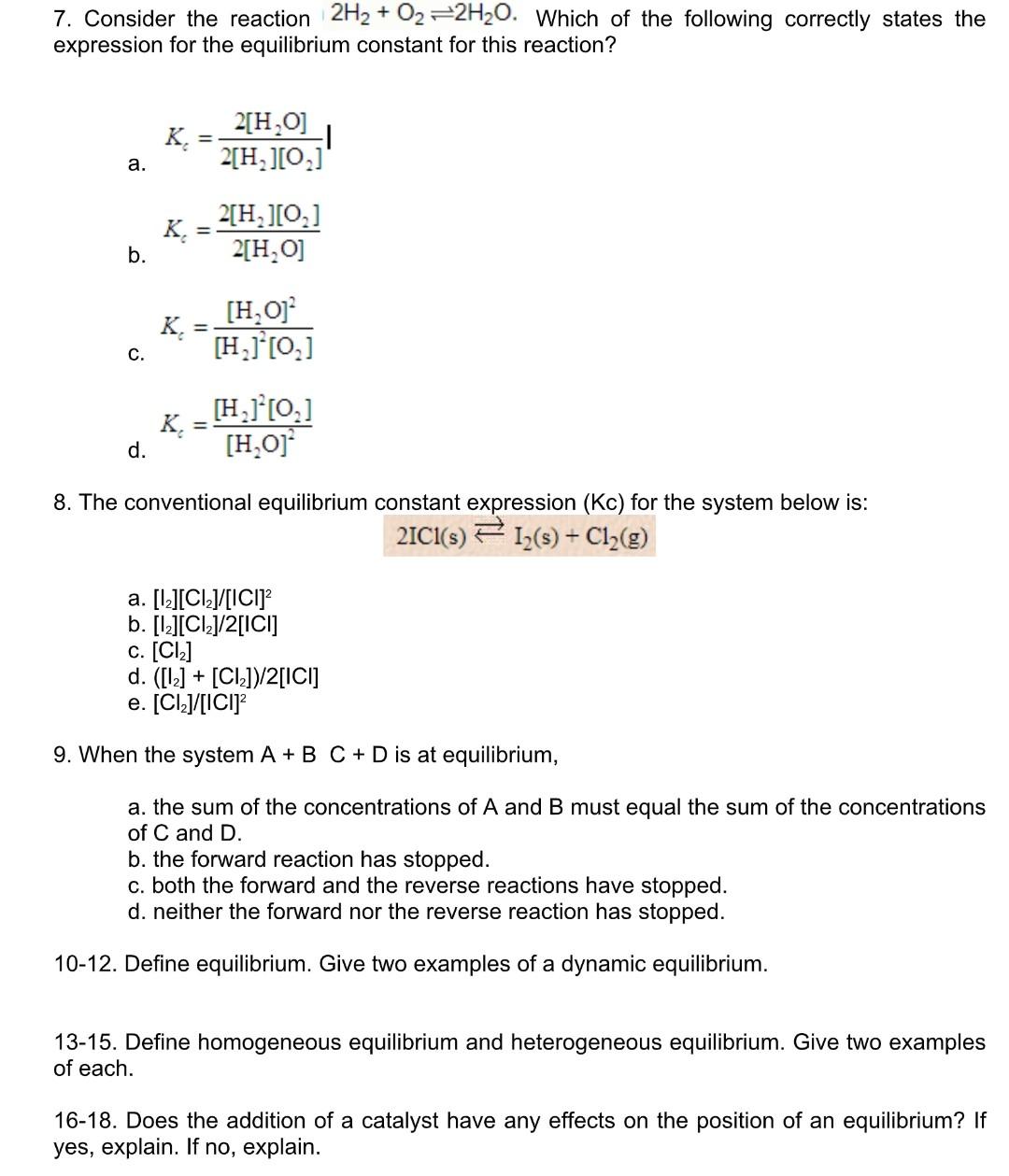Answered step by step
Verified Expert Solution
Question
1 Approved Answer
START HERE. 1. In equilibrium constant expression, the concentration of products is taken in/on the a. right side b. left side c. numerator d. denominator


START HERE. 1. In equilibrium constant expression, the concentration of products is taken in/on the a. right side b. left side c. numerator d. denominator 2. What is the representation of a reversible reaction? a. single arrow b. double arrows c. bar d. none of above 3. The relationship by which the values that relate amounts of products to reactants at equilibrium can be determined is called a. law of conservation of mass b. law of chemical reactions c. law of mass action d. active mass 4. The free energy change under standard conditions (G) is related to the equilibrium constant by the van't Hoff isotherm: G = -RTINK. But what does the symbol R represent? a. The entropy of the system b. The gas constant C. The Avogadro constant d. The reaction quotient 5. Which one of the following statements regarding chemical equilibria is false? a. Catalysts do not alter the position of equilibrium: they do not shift the equilibrium to the left or right b. At equilibrium, G = 0 C. If G for a reaction is negative, the forward reaction happens spontaneously d. If the equilibrium constant is very large, G is positive 6. Which one of the following statements regarding a dynamic equilibrium is false? a. At equilibrium, there is no net change in the system b. At equilibrium, the concentration of reactants and products stays the same c. At equilibrium, the forward and back reactions cease to occur d. At equilibrium, the rates of the forward and back reactions are identical + 7. Consider the reaction 2H2 + O2=2H20. Which of the following correctly states the expression for the equilibrium constant for this reaction? K = 2[H,O] - 2[H][0]' a. K 2[H][0] 2[HO] b. K [HO] [Hz][02] C. [H 1[0] [H,012 d. 8. The conventional equilibrium constant expression (Kc) for the system below is: 21C1(s) = 12(s) + Cl2(g) a. [12][Cl]/[ICI] b. [12][C12/2[ICI] c. [CI] d. ([12] + [CI])/2[IC] e. [Cl]/[ICI) 9. When the system A+B C + D is at equilibrium, a. the sum of the concentrations of A and B must equal the sum of the concentrations of C and D. b. the forward reaction has stopped. c. both the forward and the reverse reactions have stopped. d. neither the forward nor the reverse reaction has stopped. 10-12. Define equilibrium. Give two examples of a dynamic equilibrium. 13-15. Define homogeneous equilibrium and heterogeneous equilibrium. Give two examples of each. 16-18. Does the addition of a catalyst have any effects on the position of an equilibrium? If yes, explain. If no, explain
Step by Step Solution
There are 3 Steps involved in it
Step: 1

Get Instant Access to Expert-Tailored Solutions
See step-by-step solutions with expert insights and AI powered tools for academic success
Step: 2

Step: 3

Ace Your Homework with AI
Get the answers you need in no time with our AI-driven, step-by-step assistance
Get Started


